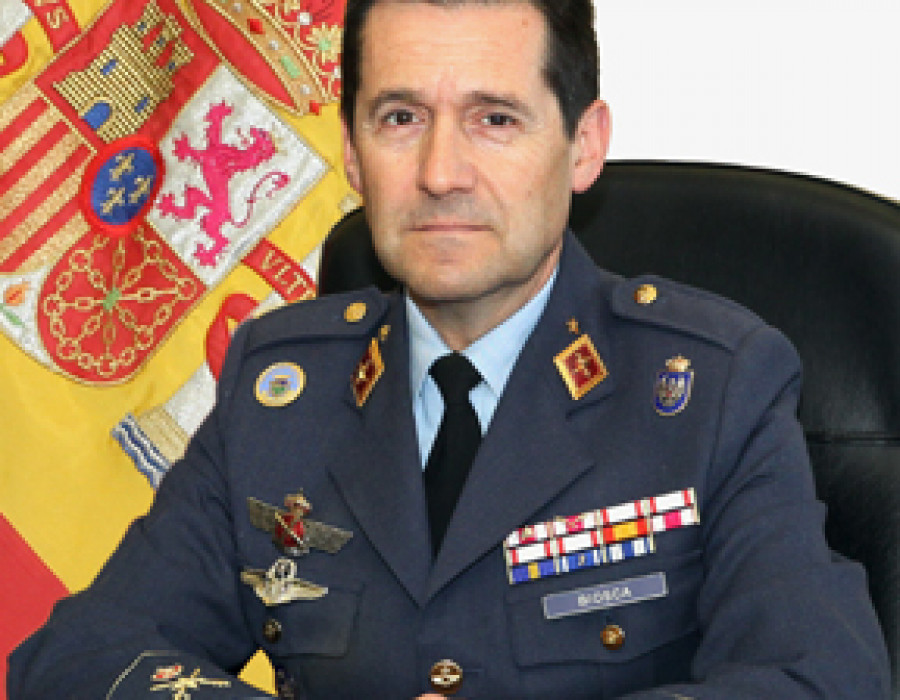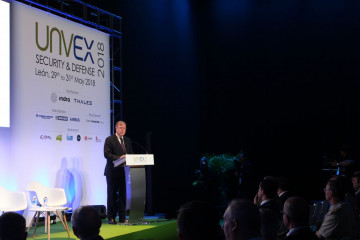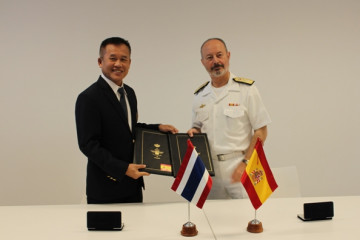Maj. Gen. Biosca Spanish Air Force: "At the UAS school, 70 students are trained every year"

Maj. Gen. Enrique Jesús Biosca Vázquez, who heads the Spanish Air Force’s command training center and its UAS (Unmanned Aircraft Systems) school since the beginning of the year, moderated a panel on drone operator and crew training at UNVEX S&D.
In an interview with Infodefensa.com, he explained that an average of 70 students were being trained every year in courses for operating Type I systems (takeoff weight lower that 150 kilograms, or 330.7 pounds), from personnel in all military branches, the Military Emergencies Unit (UME) and the Civil Guard.
The general said that among the Air Force’s most pressing needs was to finalize the training for Predator B system operators, a MALE (Medium Altitude, Long Endurance) system that will be delivered to the force at the start of next year.
How has the need to train more UAS operators within the AF grown in the past few years?
In the past five years, the number of operators enrolled in Type I courses at the UAS school has continually grown. At the school, an average of 70 students per year are being trained in Type I courses for personnel in all military branches, the UME and the Civil Guard. This training is identical for everyone, regardless of the student’s profile or branch of origin.
And to operate heavier UAS?
For courses in Type II (maximum takeoff weight higher than 150 kg), most of the demand comes from the need for future Predator B operators, with four specific courses of that type having been held in the past two years. This equates to 24 operators, between pilots and payload operators. In these courses, the profile for Predator B operator is that of a commissioned officer pilot for undertaking the tasks of an aircraft commander, and that of a sub-officer for the useful payload operators. It’s worth stressing that we’ve also trained personnel with no previous piloting experience, in 18-week-long courses, while an officer in Argentina’s Air Force was also trained in one of those courses.
What are the future expectations with regards to manned/unmanned combat aircraft use?
Our armed forces have not, for now, made a bid for armed systems. The Predator B will arrive without that capability and the same goes for the Euromale project, so this debate won’t make much sense in the medium term. In any case, it’s important to note that the future of RPAS – both those with and without combat capability – shouldn’t be about reducing the number of manned aircraft, but rather complementing them and uniting all the systems’ capabilities to achieve synergies that make a more efficient and effective use of means.
What are the most pressing needs?
Right now, to finalize the training of Predator B operators, with the idea of getting the system up and running by next year. With the remaining courses, we’re working to satisfy the demands in the armed forces and the Civil Guard. As a challenge, we’re working to transform the UAS school into a NATO-level Center of Excellence, with the idea of making the school a reference not just in training, but also doctrine.








